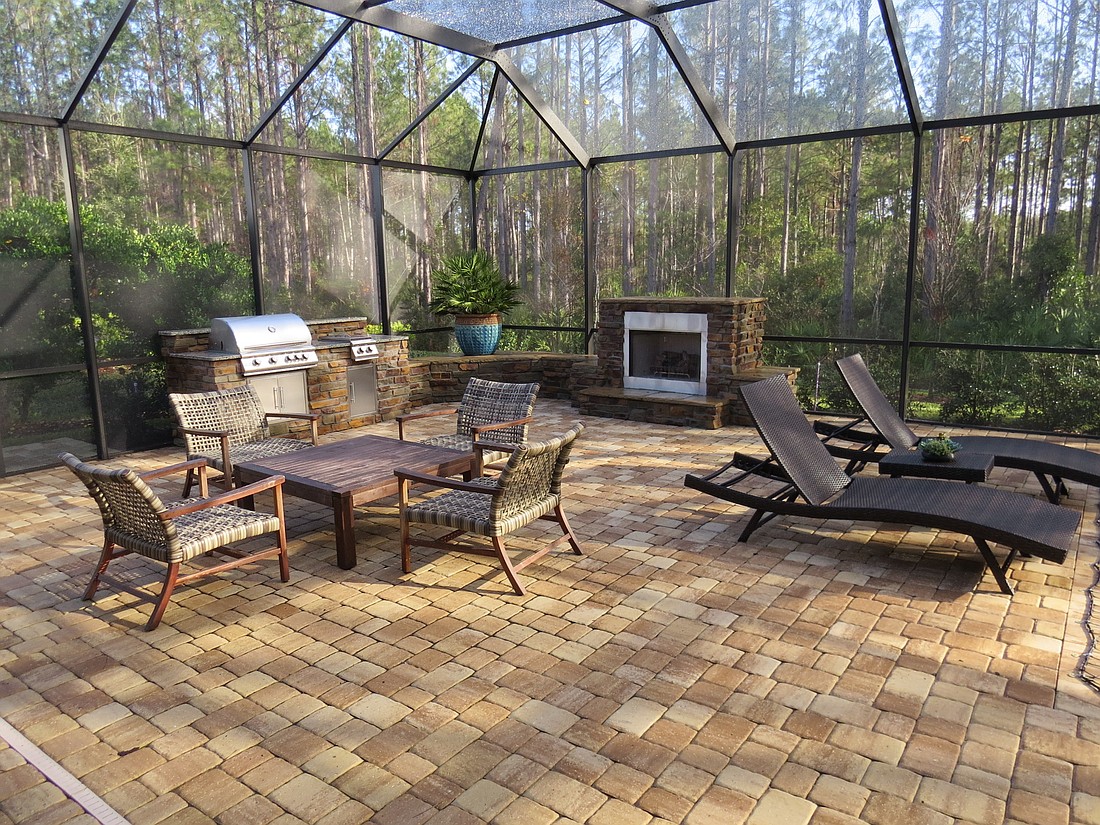
Outdoor living space continues as a leading trend in new home design and existing home renovation, according to the Association of International Architects.
This is particularly true in Northeast Florida, where the climate allows outdoor space to be enjoyed practically year-round.
In its Home Design Trends Survey covering activity during the second quarter of 2017, 70 percent of the 500 AIA member firms reported an increase in interest in outdoor living, up from 58 percent in the same quarter 2016. That far outpaced interest in the four other “special function” rooms included in the survey.
Architects reported 36 percent interest expressed in mud rooms, down from 43 percent in the same quarter last year; 29 percent interest in home offices, down from 37 percent; 22 percent interest in au pair/in-law suites, down from 31 percent; 18 percent interest in roof decks, up from 8 percent; and 11 percent interest in mechanical rooms.
“Our members are still seeing that as a very popular option in homes across the country,” said Kermit Baker, chief economist of the AIA, of outdoor spaces.
“We don’t break our results down by region, but looking at where they are coming from I am surprised how strong the results are in places you wouldn’t expect them, places where there are much shorter seasons to be able to use the space,” he said.
Continued advancements in heating and cooling outdoor spaces — a company called LifeRoom, for example, incorporates misters and heating capability into its product designs — are extending outdoor spaces into virtually year-round use.
“There have been a lot of changes in the approach to design that have effectively made it easier to use outdoor living space for more of the year, and I’m sure that’s a big factor behind the popularity of that phenomenon,” Baker said.
More than a dining set on a patio, homeowners are opting for outdoor spaces that offer a seamless visual extension of the interior. Outdoor-friendly flooring, such as wood-look tiles, can carry ambience from interior rooms to the outside as folding and sliding glass doors can be hidden away to provide an unobstructed transition.
In areas such as Northeast Florida that can experience extremely hot weather, NanaWall systems — framed floor-to-ceiling glass panels — can offer a climate-controlled enclosure when needed. Retractable screens can provide protection from undesirable outdoor elements when necessary.
As new homes continue to trend toward less heated square footage and open concepts in lieu of formal rooms, buyers are finding outdoor living offers additional space at a lower cost per square foot than finished interior rooms. This allows for luxury finishes and inspired designs that even extend the outdoor space beyond the enclosure to pergolas, additional covered seating areas, courtyards, fire pits and more.
“It has seemed to coincide with what I would call a general increase in flexibility and informality of space inside and outside the home,” said Baker. “I think people are using their space differently and outdoor living fits into that trend very nicely.”